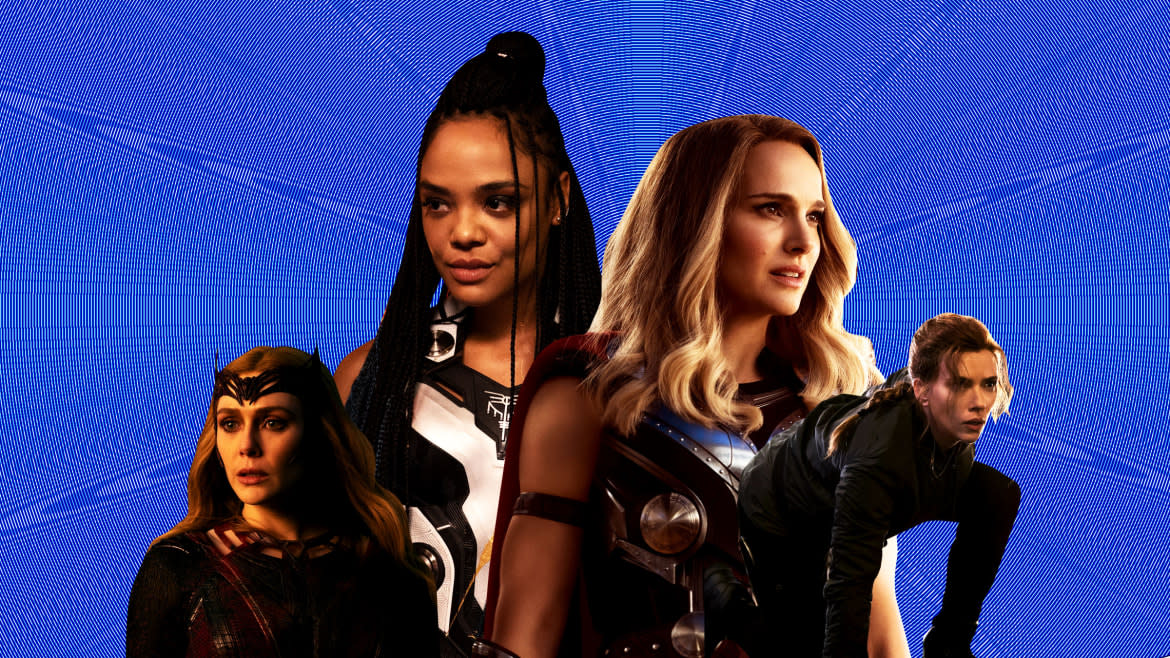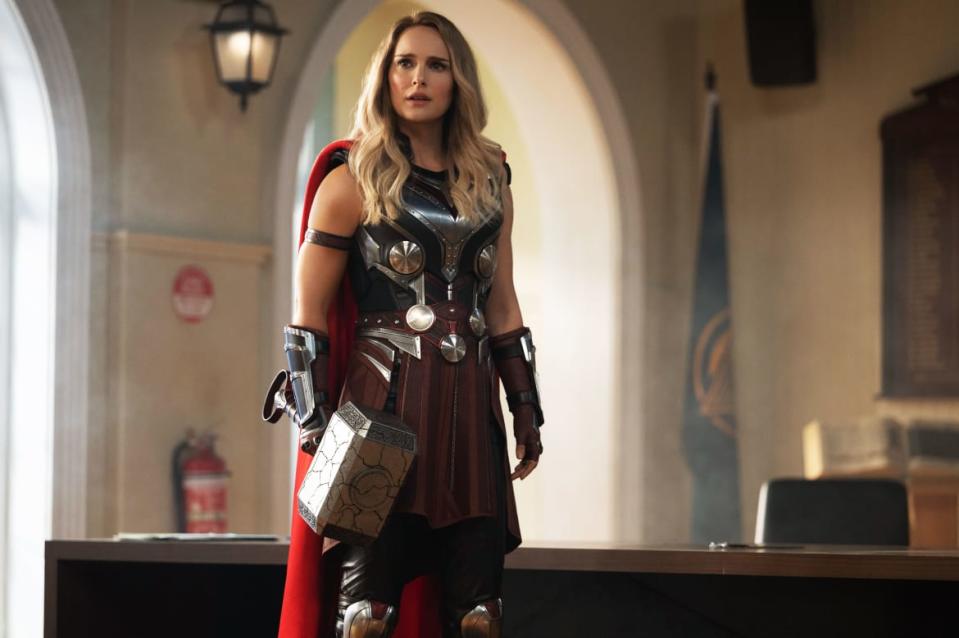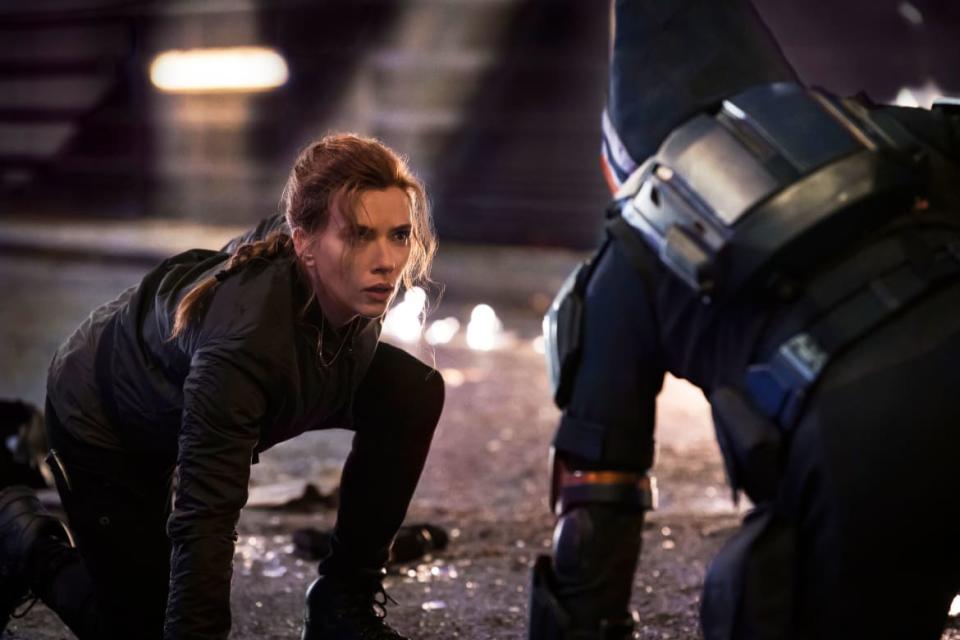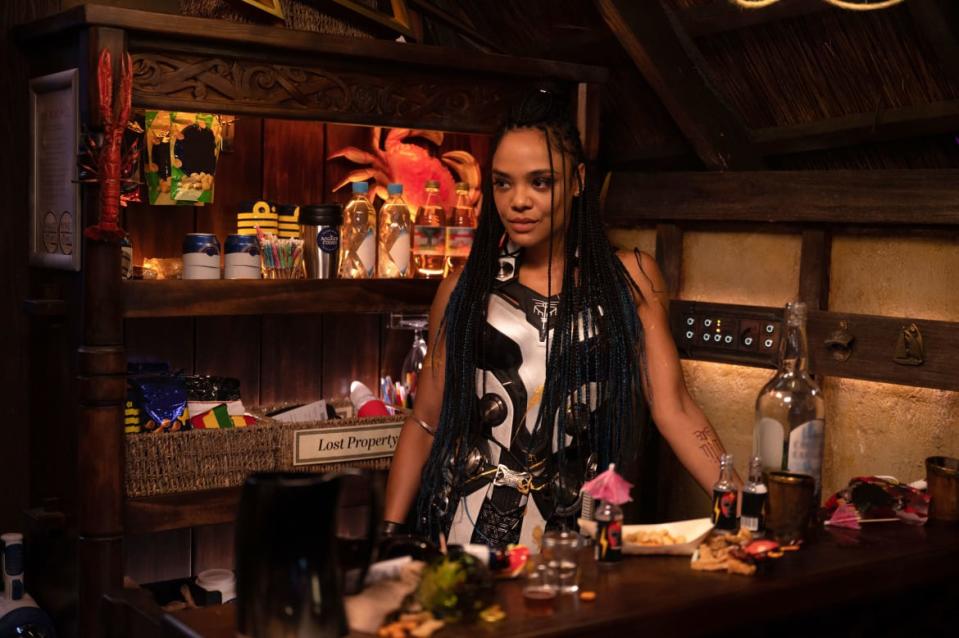What’s With Marvel Treating Its Female Heroes Like Garbage?

- Oops!Something went wrong.Please try again later.
In the Marvel Cinematic Universe, heroines have gotten a villainous treatment. After famed alleged workplace harasser and reported creep Joss Whedon included a forced hysterectomy in Natasha Romanoff/Black Widow’s backstory in Avengers: Age of Ultron, a movie in which Romanoff described herself as a “a monster” because of this, the MCU’s poor depiction of their female heroes has been an abysmal pattern.
From Black Widow making herself a martyr to motivate the boys in Avengers: Endgame to every MCU heroine meeting for the first time before teaming up against Thanos—ostensibly so Disney could have a gif for International Women’s Day—nearly every other Marvel flick has featured a disappointing portrayal of its female characters, often betraying the fans who invest in them. The streak of middling female representation sadly continues with Dr. Jane Foster (played by Natalie Portman) in Thor: Love and Thunder.
(Warning: Spoilers ahead for the Marvel Cinematic Universe.)

When it was announced in 2019 at San Diego Comic-Con that Natalie Portman would reprise her role and take up the mantle of The Mighty Thor, fans were excited. It’s been, according to Thor in the film, “eight years, seven months, and six days” since Portman and the MCU—I mean Jane and Thor—broke up. Every Thor-related film appearance post-The Dark World referred to Foster as Thor’s ex-girlfriend through multiple off-screen appearances. Now that she returned for the first time in nearly a decade, Love and Thunder saddles the famed astrophysicist Jane Foster with a grueling diagnosis of, *sigh,* Stage 4 cancer.
The first frame of Jane Foster’s return reveals her getting an MRI before her diagnosis. She is told by her old friends Dr. Selvig (Stellan Skarsgård) and Darcy (Kat Dennings) that finding a cure would be difficult. As she thinks all hope is lost, Foster seeks out Thor’s ex-hammer, Mjolnir, in New Asgard to see if its magic can heal her. Due to a spell Thor put on it years ago, she’s able to wield Mjolnir, giving her the power of Thor. Sadly that great power comes at a price: Every time she channels it, she becomes more physically ill.
It’s worth mentioning that Jane’s cancer wasn’t a random choice. It actually connects to the comics. In 2014, writer Jason Aaron and artist Russell Dauterman conceived Jane Foster’s Mighty Thor alias and cancer storyline. According to the official Marvel site, “Every time she changed into Thor, it purged her from all toxins and chemotherapy, inadvertently weakening her and accelerating her cancer from Stage 1 to Stage 4.”
Though it is faithful to the source material, Jane’s storyline arrived at inarguably the worst time. The majority of phase four’s cinematic output has constantly put heroines in negative positions. The phase might have started with Black Widow finally getting a solo movie—but that was only after she sacrificed herself in Endgame.

In another instance, Spider-Man: No Way Home kills off Aunt May (Marisa Tomei) for the sake of motivating Peter Parker. Although May wasn’t a hero per se, her influence as a supporting parental figure to Peter was monumental. Her death was an intentional twist on the “Uncle Ben” lore of Peter’s heroism, even down to her uttering the “with great yadda comes great yaddability” line right before she passes. Given the ratio of women to men who have been killed off as plot devices in these films, the death seems somewhat tasteless.
The Marvel Cinematic Universe’s Phase 4 Has Been a Total Train Wreck
This brings us to Doctor Strange in the Multiverse of Madness, which still makes me cringe over how poorly every female heroine was treated in it. Remember how Wanda Maximoff’s (Elizabeth Olsen) solo series, WandaVision, explored grief authentically and compellingly? Well, all of that character progression was thrown out the window in MoM. Her sole motivation in the film is her longing to be a mom. It’s basically her only character trait, as she spews out lines like, “I’m not a monster, I’m a mother,” and goes on a homicidal multiversal tour. Then there’s America Chavez (Xochitl Gomez), who made her MCU debut only to primarily serve as a walking plot device, getting Stephen Strange from one multiverse to another as they flee from Wanda.

The sins of No Way Home and Multiverse of Madness heavily carry over to Love and Thunder. The film’s other female heroine, King Valkyrie (Tessa Thompson) who was a shining highlight in Thor: Ragnarok, is majorly sidelined. Jane and Thor embark on a quest to save New Asgard’s children from the clutches of Gorr the God Butcher (played by Christian Bale), Valkyrie joins them, but barely gets any moments to shine herself.
Given how much the queer character was lauded as a major step forward when it comes to progress in the MCU, it was disappointing that, in this film, she is essentially the two star-crossed lovers’ third wheel—only there for the vibes and nothing else. She’s even injured halfway through the narrative, which sends her back home to heal and sit in the wings before the film’s climax.

‘Thor: Love and Thunder’ Is a Grand Disappointment
Don’t even get me started with Lady Sif, who has been one of Thor’s comrades since the first film in 2011. With each Thor entry she appears in, poor Jaimie Alexander, who plays Sif, has gotten less screen time than just about everyone else. That happens again in Love and Thunder.
Four phases deep, it’s been pretty harrowing how women have been portrayed in the MCU—and it’s not getting any better. By the time I saw Foster getting an MRI scan, I made a loud groan.
Jane’s cancer didn’t need to abide by the playbook. Because Foster has been blipped from the franchise long before Thanos made half the world disappear for five whole years, having her grand return be so tragic comes across more shallow than it does empowering. Jane has more agency this time around than she did in her last appearance, when she was more of a plot device than a full-fledged character. So why then go this route? The poor streak of middling female representation in the MCU keeps falling deeper into the rabbit hole.
Get the Daily Beast's biggest scoops and scandals delivered right to your inbox. Sign up now.
Stay informed and gain unlimited access to the Daily Beast's unmatched reporting. Subscribe now.

